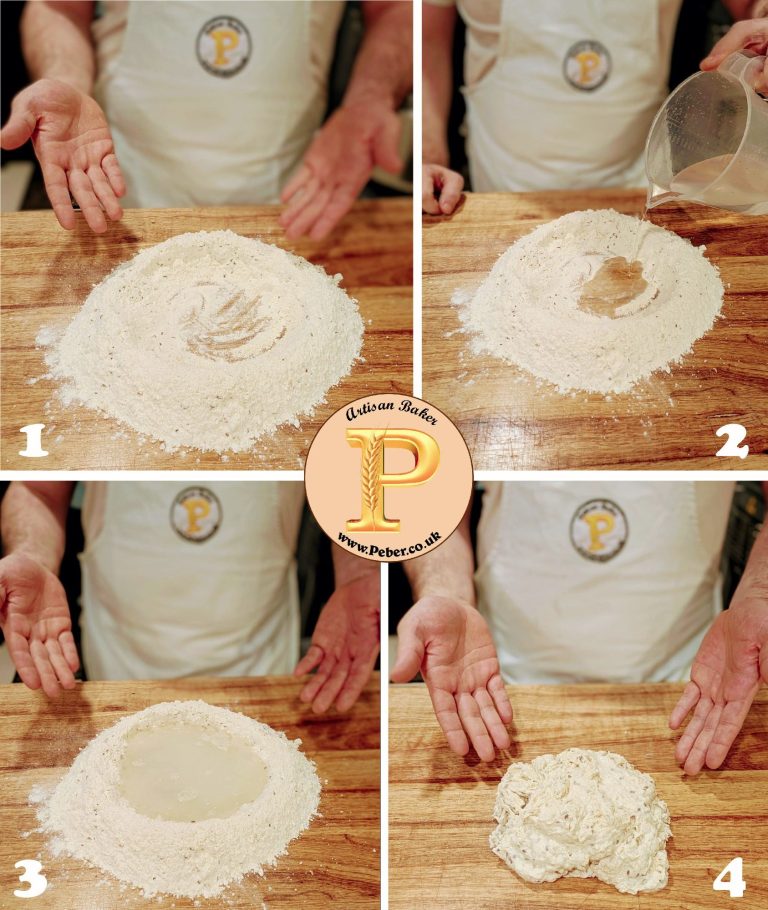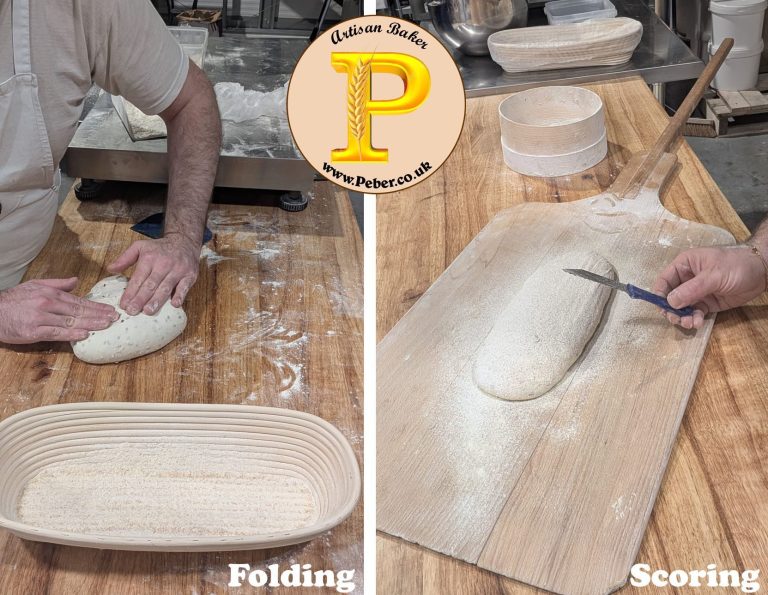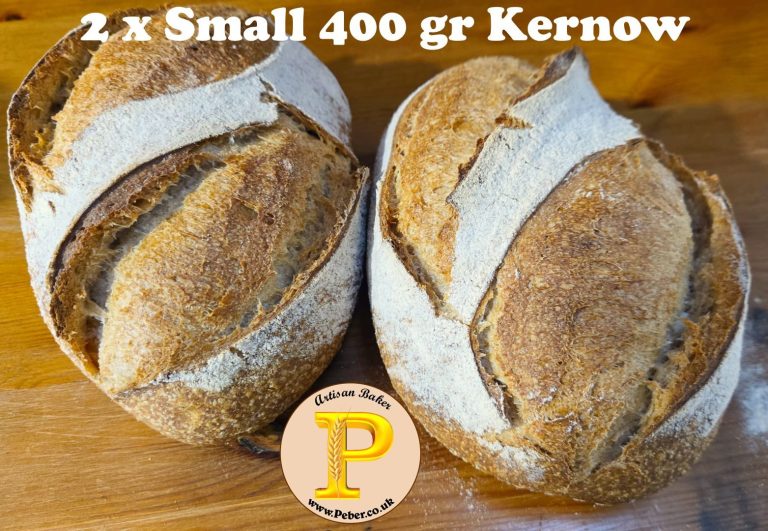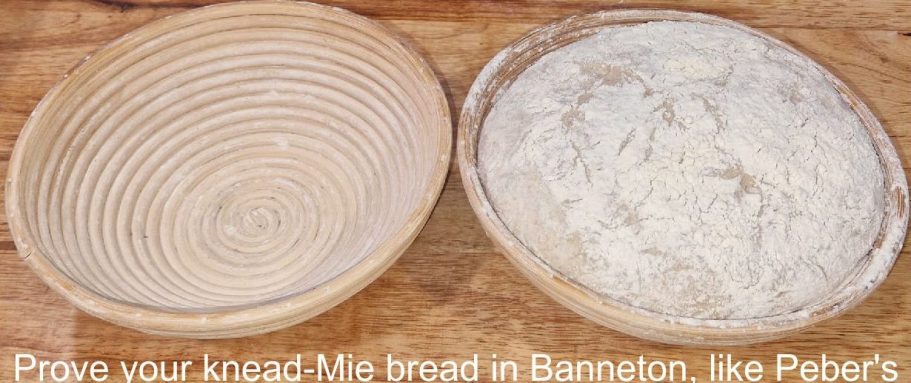Mode d'emploi for the Sourdough pre-mix
Used for simple bread making
Read in In French here please
Mixing Your Dough
Follow these steps to properly mix, shape, and bake your dough to achieve 1200 gr of dough with the small retail / home pouch and 3600 gr with the large catering professional pouch :
1. Autolyse for both pouches
This is the first stage of fermentolyse, where Knead-Mie Sourdough is combined with 25°C warm water to allow proper absorption:
- Small (810 gr pouch): Use 400 gr water, added in two stages >> (350 gr first during autolyse) + 50 gr with salt at stage 2.
- Large (2430 gr pouch): Use 1170 gr water, added in two stages >> (1100 gr first during autolyse) + 70 gr with salt at stage 2.
Mix well but gently until the water is fully absorbed and rest for 30 minutes.
2. Adding Salt & First Fold
Dissolve the salt in the remaining water and mix until fully incorporated. Perform the first fold, then let the dough rest for 30 minutes.
- Small pouch: Add 50 gr water + 12g salt, achieving a final dough weight of 1200 gr.
- Large pouch: Add 70 gr water + 36g salt, achieving a final dough weight of 3600 gr.
3. Second & Third Folds
Perform the second and third folds, allowing the dough to rest for 30 minutes between each fold.
4. Shaping, Proofing & Baking
Shape the dough to your preferred weight*:
- Small pouch (1200g total): Make one 1200g loaf or two 600g loaves.
- Large pouch (3600g total): Example: three 1000g loaves + one 600g loaf.
5.Proving
Let the shaped dough proof for 12 hours at ambient temperature, either overnight or during the day, depending on your baking schedule.
- For tin baking at home, place the dough directly into a baking tin.
- For Dutch oven baking, proof the dough in a banneton or a floured cloth-lined bowl for easy transfer.
6.Scoring
Scoring creates controlled expansion during baking. Use a sharp blade or lame for precise cuts.
- Some breads (pizza, ciabatta, flatbreads) don’t require scoring, as they naturally expand.
- Decorative scoring adds a personal touch, but avoid overly deep cuts, as they may cause uneven expansion.
- Avoid scoring an over-proofed dough, as it may deflate.
7.Baking
- Preheat your oven to 240°C—this compensates for heat loss when placing the dough inside.
- Once the dough is in, reduce the temperature to 230°C and create steam using a steam function or a water tray at the bottom of the oven.
- If your home oven maxes out at 200°C, adjust as follows:
- Bake in a Dutch oven with the lid on for 30 minutes to trap steam and help the bread rise.
- Remove the lid carefully and bake for another 10 minutes to develop a golden crust.






©Copyright.Peber Limited All rights reserved.
Peber Limited ™, ®, © 2023 - 2024-2025
UNIT 4 - CORNWALL BUSINESS PARK WEST - SCORRIER - REDRUTH - TR16 5FG
Telephone : 01209643214
Cie Nb 15182934 - Vat : GB 451 5801 07
We need your consent to load the translations
We use a third-party service to translate the website content that may collect data about your activity. Please review the details in the privacy policy and accept the service to view the translations.